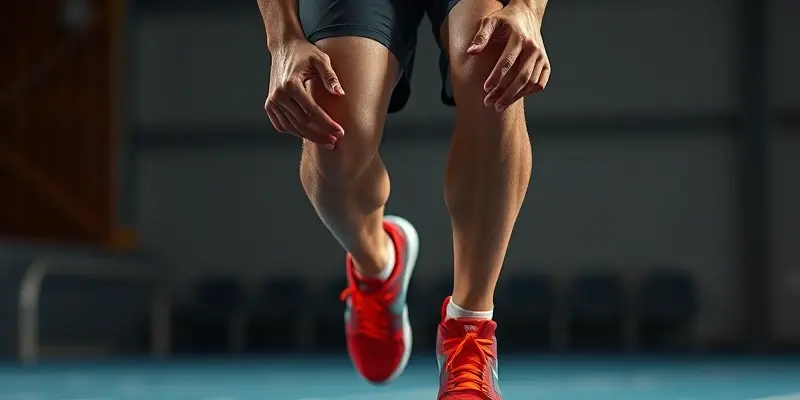Welcome to GymPulse Club! I’m your guide—fitness and health expert with over a decade in sports training and wellness. Today, we’ll explore how to protect your knees and boost recovery through evidence-based strategies for ACL prevention. Whether you’re a weekend warrior, a professional athlete, or somewhere in between, let’s make your knees unstoppable.
Why Should You Care About ACL Injury Prevention?
Picture this: you’re crushing it at your favorite activity, then—snap—your season grinds to a halt. ACL (anterior cruciate ligament) injuries are common and can sideline even the best. But with the right know-how, you can stack the odds in your favor and keep moving confidently.
Understanding the ACL: Your Knee’s Unsung Hero
Think of your ACL as your knee’s main shock absorber. It stabilizes your leg during quick stops, jumps, and changes in direction—skills vital in nearly any sport or active lifestyle.
Did you know? ACL injuries occur most often in athletes, but anyone can be at risk—especially if you love pickleball, basketball, soccer, or HIIT workouts. Female athletes are particularly vulnerable due to anatomical and hormonal factors, making prevention training even more essential.
Essential Drills for ACL Injury Prevention
Want to future-proof your knees? Start with these smart, science-backed drills. They’re simple, scalable, and fit for all levels.
Key Exercises (and Why They Work)
- Walking Lunges: Strengthen your quads, glutes, and balance. Step forward and lower until both knees are bent at 90 degrees. Push back up and switch legs.
- Hamstring Leans (Nordic Curls): Kneel, have a partner hold your ankles, and slowly lower your torso forward, using your hamstrings to resist. Don’t have a partner? Try single-leg bridges.
- Squats & Wall Squats: Build an unbreakable base. Ensure knees track over toes—imagine sitting onto a low chair.
- Split Jumps (Jump Lunges): Enhance power and teach your brain safe landing patterns. Start with small jumps, landing softly each time.
- Single Toe Raises: Boost calf and ankle stability. Stand tall, lift onto your toes, and slowly lower.
- Hip Bridges & Clam Shells with Resistance Bands: Target critical hip and glute muscles, especially for female athletes. This reduces knee “caving in” when landing.
- Core Work: Planks, bicycle crunches, and standing knee tucks keep your entire kinetic chain stable.
Beginner-Friendly Progressions
Start with double-leg exercises (squats, lunges) to master form, then progress to single-leg variations for enhanced balance. Always move slowly, focusing on quality.
Pro tip: Work these drills into your warm-up or strength circuits 2-3 times per week.
Movement & Technique: Safer Patterns That Save Knees
It’s not just strength—how you move makes all the difference.
Mastering Landing and Agility
- Always land with knees bent, feet shoulder-width, and thighs/knees in line (no “knock knees”).
- Land softly on the balls of your feet—think of catching an egg, not smashing it.
- Both feet together: Avoid bounding or twisting onto one leg unexpectedly.
Controlled Pivoting
Practice changing directions with controlled, bent knees and hips. Imagine a soccer player “cutting” to dodge opponents: stay low, center your weight, and keep movements sharp but smooth.
Smart Tools & Support for Your Recovery Journey
Innovation aids prevention and rehab—here’s how you can level up:
- Resistance Bands: Add challenge to glute and hip drills with gentle, joint-friendly resistance.
- Balance Trainers or Cushy Surfaces: Single-leg balancing on a wobble board or foam mat fires up the small muscles that stabilize your knee.
- Nutrition: Prioritize lean proteins, omega-3s, and antioxidants. These nutrients fuel tissue repair and keep inflammation at bay.
- Mindset Matters: Set tiny, visible goals—like not missing a single warm-up session this month. Celebrate progress, no matter how small!
Practical Tips for Sticking with Prevention and Recovery
Consistency trumps intensity. Here are some habits that keep you on track:
- Focus on technique over how many reps you can do. Poor form sets you back.
- Make prevention part of your routine—not just a pre-season to-do.
- Listen to your body: Soreness is okay, sharp pain isn’t.
- Don’t go it alone: If you’re unsure about form or progress, consult a sports medicine professional or check out our injury recovery checklist.
Conclusion: Ready to Defend Your Knees?
Your knees are priceless—protect them with daily investment. The best athletes in the world make ACL prevention part of their routine, and so can you.
As GymPulse Club’s lead content writer and longtime sports coach, I encourage you to build bulletproof knees—not just for better performance, but for a lifetime of adventure. Ready to start? Grab a band, set a goal, and take your first confident step. Need tailored advice? Don’t hesitate to seek guidance from a qualified professional—you deserve the best for your health and hustle.
Stay strong, stay moving, and see you out there!

